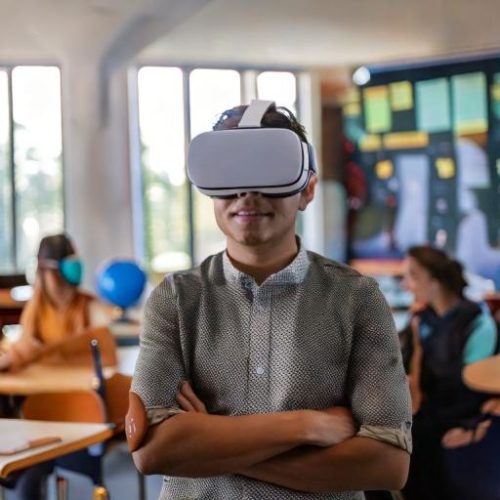
The integration of Virtual Reality (VR) in education is transforming traditional teaching methods, offering exciting opportunities for interdisciplinary collaboration among teachers. As educators seek innovative ways to engage students and enhance learning experiences, VR stands out as a powerful tool that fosters cooperation across various subjects. In this post, we’ll explore how VR can be utilized in the classroom to promote collaboration between teachers and enrich the educational journey for students.
1. Breaking Down Silos
One of the greatest advantages of VR is its ability to break down the silos that often exist between different subjects. By creating immersive environments that combine elements from science, history, art, and more, teachers can collaborate on lessons that draw connections between disciplines. For instance, a VR simulation could transport students to ancient civilizations, allowing history and art teachers to work together on projects that explore cultural artifacts alongside historical narratives.
2. Creating Shared Learning Experiences
VR enables teachers to design shared learning experiences that captivate students’ imaginations. For example, a science teacher and a literature teacher can jointly create a VR experience that showcases the scientific principles behind climate change while incorporating literary works that address environmental themes. This not only deepens students’ understanding of the topics but also encourages them to see the interconnectedness of knowledge.
3. Facilitating Professional Development
Using VR for professional development can help teachers from different disciplines collaborate and share best practices. Virtual workshops can simulate classroom scenarios, allowing teachers to experience interdisciplinary teaching strategies in action. This hands-on approach fosters a collaborative spirit, as teachers can discuss and reflect on their experiences, ultimately leading to more integrated lesson plans and teaching methods.
4. Engaging Students in Collaborative Projects
VR can facilitate collaborative projects where students from different classes work together in a virtual space. For instance, a group of students studying environmental science can collaborate with peers in an art class to create a VR exhibit that highlights local ecosystems. This project not only enhances learning but also encourages teamwork, problem-solving, and creativity—skills that are essential in today’s interconnected world.
5. Encouraging Feedback and Reflection
After participating in VR experiences, teachers can engage in discussions about what worked well and what could be improved. This feedback loop fosters a culture of continuous improvement and allows educators to refine their collaborative practices. By reflecting on the impact of VR on student engagement and learning outcomes, teachers can adapt their approaches to better meet the needs of their students.
